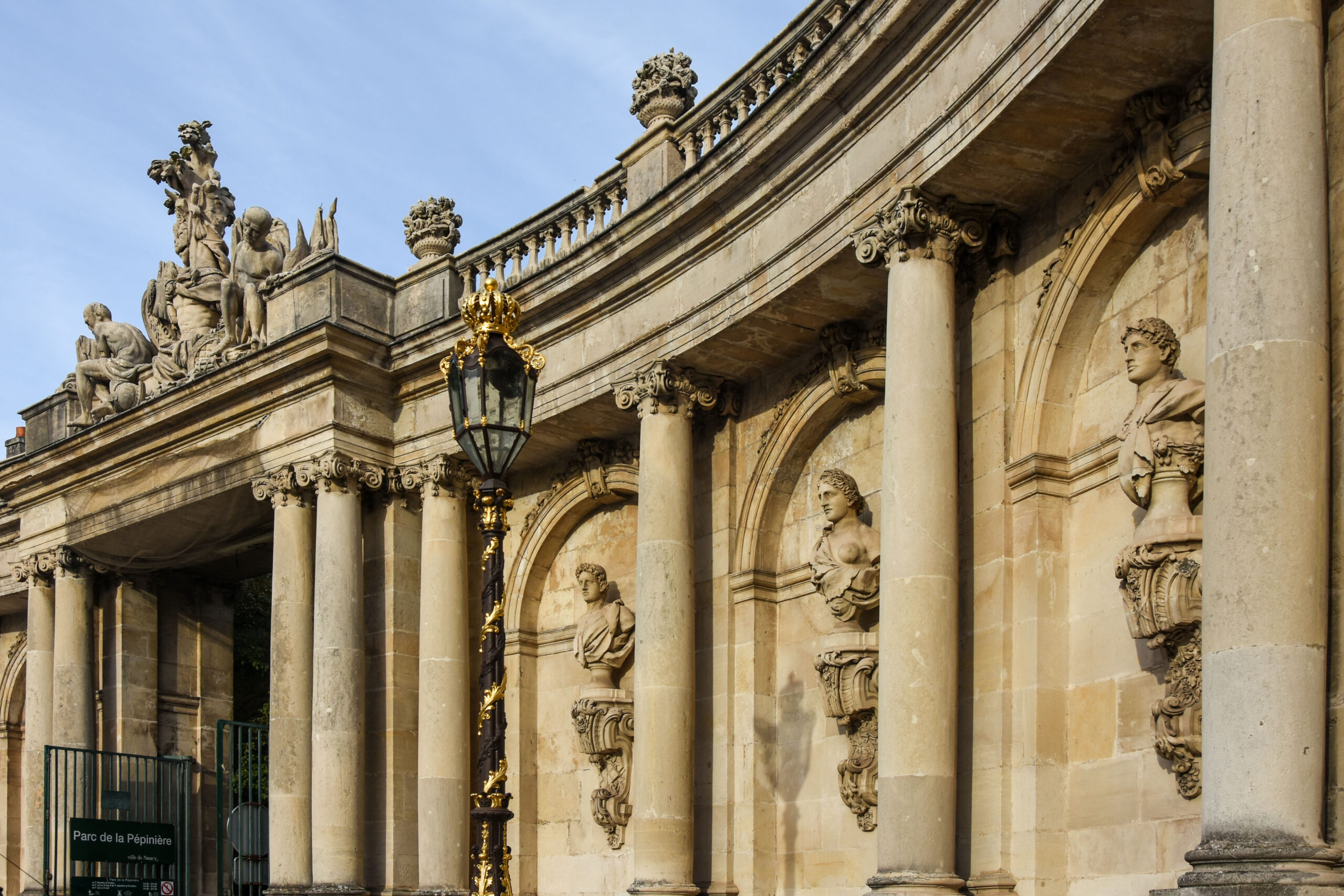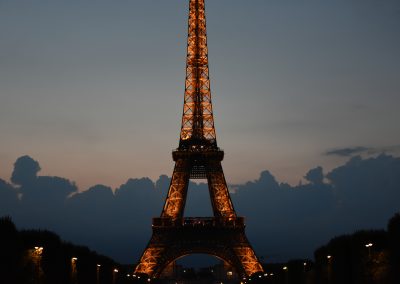As I explained in the last post, I booked a flight to Luxembourg because I have two friends who work there. But the two live in Metz, about an hour by train south of this small country, and they studied and lived in Nancy, another hour by train south of the city where they now live. Like almost everyone else, they were only available to go out with me during the weekend, so on that Friday I planned to go to Nancy, and on the next day they showed me the city where they live. In this post, I leave you my advice on what to see in Nancy, following Antoine and Sofia’s tips.
I arrived in Nancy by train and right in front of the station, I could see the famous Brasserie l’Excelsior, a beautiful example of Art Nouveau architecture. Across the street, we also had a confiserie with all the typical cookies and sweets of the region, such as Madeleines, bergamot candies or Macarons, but not the ones we usually know, some round cookies tasting like almond instead. I immediately felt I had to take some to my hosts, thankfully it was right in front of the station, ideal for buying them at the end of the day, on the way home.



The first mandatory stop is Place Stanislas. This and the neighboring Place de la Carrière and de l’Alliance are UNESCO World Heritage Sites and manage to take us back to the 18th century, when Stanislaw Leszczynski, Duke of Lorraine, inaugurated these squares, making the city known as the one “of the golden gates”.
The City Hall occupies the entire south side of the square. The Lorraine Opera House and the Grand Hôtel de la Reine are on the east side, opposite the Museum of Fine Arts. To the north are two one-story buildings known as the Basses Faces and the Arc de Triomphe that leads to the Place de la Carrière. Still on Place Stanislas we could find the Ephemeral Gardens, a botanical installation that takes place every year between the end of September and the beginning of November.
Place de la Carrière is actually a medieval square, located in the old town and used for horse training and tournaments. In the 18th century, the Government Palace was built for the intendant, or representative of the French government. Stanislaw’s architect Emmanuel Héré remodeled all the facades of the square and built terraced houses on the corners. Four rows of trees joined in two long parallelepiped canopies, run the length of the square, which is also decorated with small fountains with cherubs. Place de la Carrière marks the gateway to the old town and takes us to the Palace of the Dukes of Lorrain, which today houses the Lorrain Museum, but which is temporarily closed.













We then arrive at the Basilica of Saint Epvre, which I tried to visit at different times of the day, but without success. I didn’t mind much because I loved walking the streets of this area of the city, a neighborhood that dates back to medieval times. It was also here that I had lunch, at a place recommended by my friends, but which I did not love. On top of that, I urgently needed to go to the bathroom and the one in the restaurant was out of order.
I continued my way, tried to visit the Lorrain Museum, but realized that it was temporarily closed, so I just admired its facade and the beautiful decorative work on the roof, and headed north towards Porte de la Craffe, the oldest fortification in Nancy. It was built between the 14th and 15th centuries and later became a prison until the 19th century. The Porte de la Citadelle, immediately behind, doubled the city’s defenses at this point and la Craffe became a symbol of the Old Town.










But going to the bathroom became more than urgent, but I’m very cheap and I didn’t want to spend money to consume something in a cafe to have access to something that is a basic need, because I had already done it, but in a place which, after all, had no toilet available. I looked for a public bathroom and found one on the opposite side of Parc de la Pépinière. This green area is the lung of the city, the largest park in Nancy, with 21 hectares, but in the rush of cross it, I saw little of it.
The Park is right next to the World Heritage Squares and suddenly I was on the Place d’Alliance. Built on the site of the Duke of Lorraine’s former vegetable garden, the third of the UNESCO-listed squares is also the smallest and most discreet. But one cannot miss the unusual fountain with three bearded old men (representing three rivers) and more cubically pruned trees.
My friends Antoine and Sofia are architects, we studied together, so they gave me a list of some interesting buildings to see, like the Nancy School of Architecture, where they both studied, with its slender pillars, right in front of the canal. I walked, always by the water, to another building with a very peculiar architecture and from there I followed Rue de Saint Nicolas, another of the old streets, which crosses the urban fabric of Nancy in a disorderly way, as was common in the Middle Ages, back to the city center.







When I’m planning a trip, I usually check the opening times of things, but as I was purely following my friends’ tips, some things went wrong. So I walked a little back and forth through the city. I had been there before, but it was closed, so I went back to the Cathedral of Notre-Dame-de-l’Annonciation.
Although the church was not very rich, there was a very nice girl at the entrance, who gave a little explanation of the church and invited me to take a pamphlet, available in several languages but not Portuguese, which explained in more detail each part of the cathedral. What I liked the most was the amount of light coming inside!
I also returned to Place Stanislas to see it in a different light and that of de la Carrière, as I remembered that Antoine had told me about a little hidden street worth visiting, the Rue des Écuries. This street gives access to garages that are located between the houses of Place de la Carrière and Parc de la Pépinière, but the most interesting part of it are the metal bridges that connect the houses to their gardens and backyards, which are found above the garages.
I went back further north to visit the Church of the Cordeliers, as I noticed that it had some pieces from the Lorrain Museum, including a model of the city, with projections of the plans and the evolution of Nancy over the centuries












I ended the day “getting lost” in the pretty little streets of Nancy, on my way to the confiserie in front of the station, where I would buy Madeleines de Liverdun (Antoine’s favourites, I discovered that night). When I left the shop I realized that I had just missed a train and that there would be another one in half an hour. Fortunately, they had installed a piano at the station and I could watch a concert by two young men, who were also waiting for their trains.



If you liked this post and want to read more about my trips to France, you can visit the following posts:


